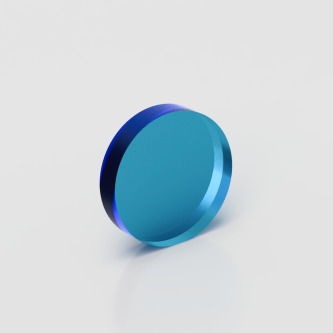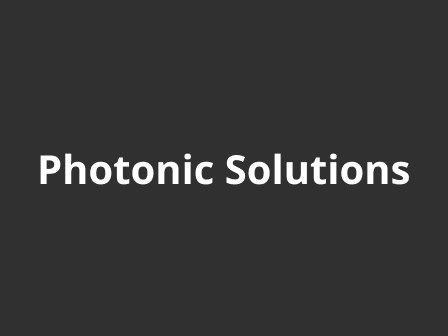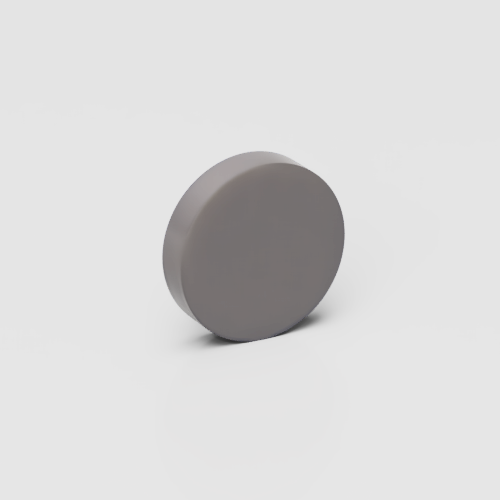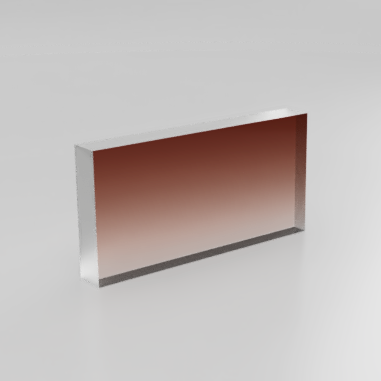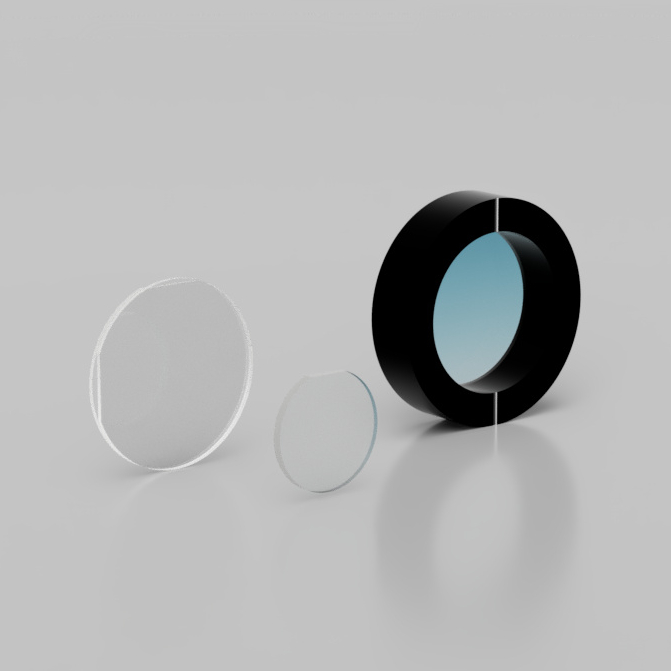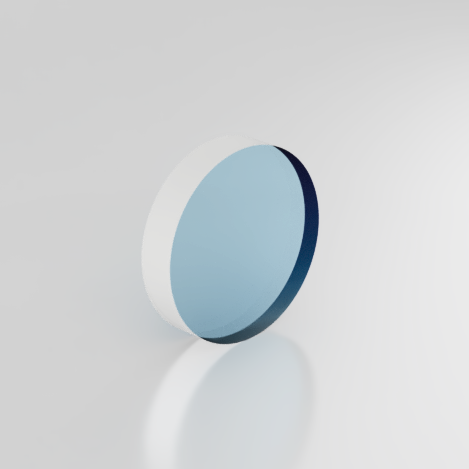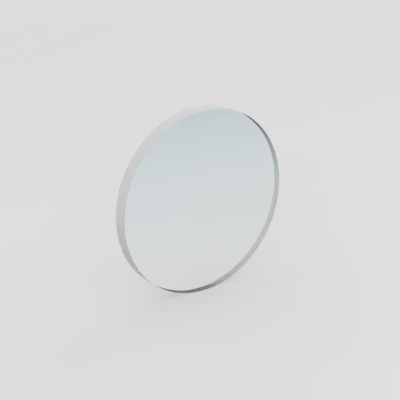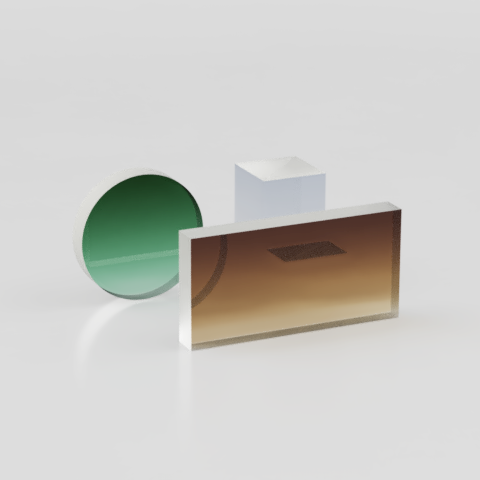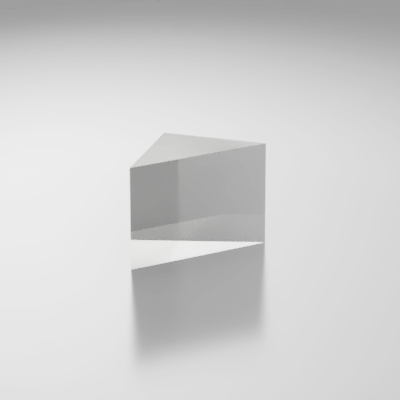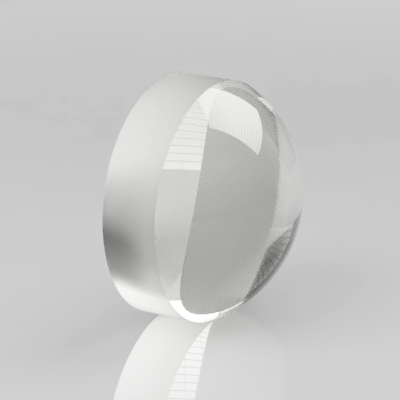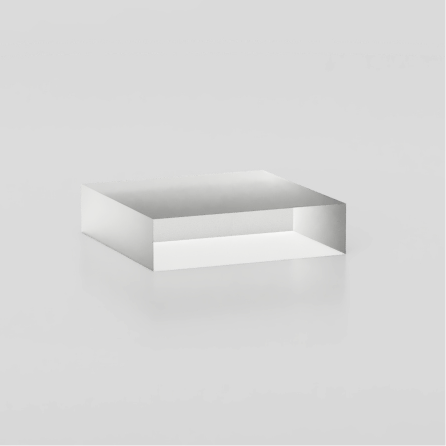Products in Optics
Co:Spinel crystal (cobalt spinel) is an exceptional optical element for Q-switching. It serves as a saturable absorber for passive Q-switching in solid-state lasers operating within the eye-safe wavelength range of around 1.54 µm. Co:Spinel crystals available from stock.
The Cr:YAG crystal, or Chromium-doped Yttrium Aluminum Garnet crystal, is a popular choice for passive Q-switching in lasers due to its cost-effectiveness. This crystal is known for its durability, high damage threshold, and excellent thermal properties, which contribute to its effectiveness in Q-switching applications. It’s commonly used in various types of lasers including Nd:YAG, Nd:YLF, and Nd:YVO4 lasers. Cr:YAG crystals available from stock.
Dichroic mirrors also known as wavelength separators or combiners are used in various applications. One of the most common use in resonators is to transmit pump and reflect lasing wavelengths. Outside of the resonator, optics are used for harmonic separation. Diode laser systems use many such optical elements to combine various wavelengths. Dichroic mirrors available from stock.
Waveplates manipulate light polarization via retardation in birefringent crystals. The waveplate’s thickness and configuration determines retardation. Various configurations exist, including single plate, optically contacted or air-spaced options. Air-spaced achromatic waveplates provide retardation across broad wavelength range. Waveplates available from stock.
Mirrors, with their diverse applications ranging from resonators to beam delivery paths, play a crucial role in various tasks. Tasks demanding an extremely high reflection rate of up to 99.99% would necessitate the use of sputtering coatings. Conversely, for tasks where a reflection rate of 99.5% suffices, a more cost-effective alternative would be to employ mirrors coated through evaporation. Various mirrors available from stock.
Windows are used to protect more expensive optical parts from harsh environments or debris. The other task of the window is to transmit radiation with minimum losses. For this reason, protective windows are made of carefully chosen material and are AR/AR coated for the specific spectral range used in the application. Windows available from stock.
Polarizers are mainly used to clean polarization or in combination with a waveplate to act as a power attenuator. The typical extinction ratio of polarizers (cubes) designed for narrow wavelength range is >500:1, and >1000:1 ratio could be reached for thin film polarizers (TFP). Polarizers available from stock.
Prisms are mainly used to reflect the beam in some specific direction and to have the required orientation of the image. The most common type of prism is the right angle. When the beam enters from the hypotenuse side it’s reflected back by total internal reflection with a minimum beam deviation. Hypotenuse face is typically coated with AR to have minimum reflection losses. Prisms available from stock.
Spherical lenses, available in various designs such as convex, concave, or meniscus, are integral components in optical systems. They are manufactured from high-quality materials like fused silica, borosilicate, or other types of glass or crystals, ensuring optimal performance and durability. Lenses could be coated with low absorption antireflective (AR) coatings.
Yb:KGW crystal (Yb-doped potassium gadolinium tungastate) is a widely used laser active material to generate ultra-short pulses in range of few hundred femtoseconds. Large absorption cross section at around 981 nm makes the crystal well suited for diode pumping. Efficient absorption and low quantum defect let’s to build compact lasers for high power applications.

